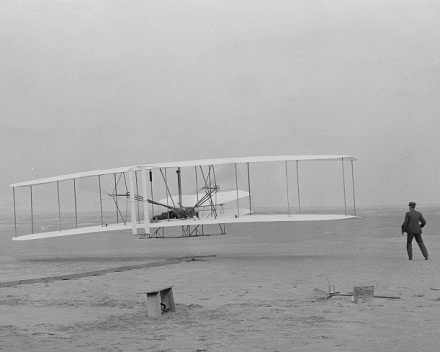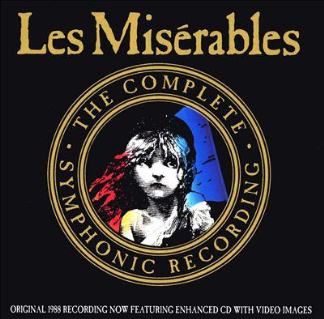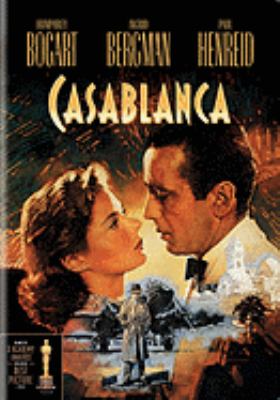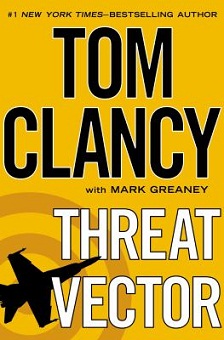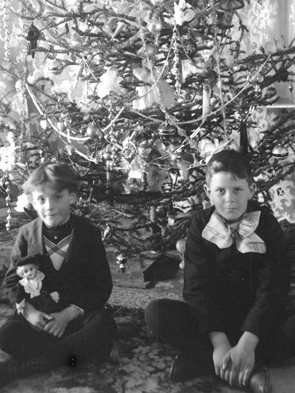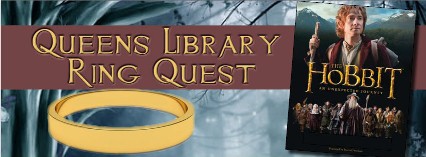The houses in Moonrise Kingdom look like advent calendars, tiny compartments filled with toys. There are bird costumes and a raccoon cap and an ancient phonograph that runs on batteries. You can see every room, because the camera never stops moving, as though the director, Wes Anderson, were afraid he might miss something. You begin to suspect that Anderson thinks of the whole world as a cabinet of wonders. The story has to do with a boy and girl who run away into the woods, where they camp out in the world's smallest tent. Everything that happens is completely implausible, so I believed it utterly. When I left the movie theater, I passed a vendor selling ginger juice and a woman from an animal shelter who was surrounded by tiny cats. I thought: Wes Anderson has found a way to production-design New York. When you see the movie, you may want to watch it on freeze-frame, so you can ask the same question you ask about a cabinet of wonders: How did they do that?
Since our move to the country a little over a year ago, we have been fortunate enough to have lots of land, which meant that we could have an even bigger garden than we had in our plot at the Community Garden in Great Neck. This turned out to be a very good thing, because I find myself becoming more and more allergic to the preservatives and additives food companies seem to be using these days.
So I turned to my new garden with a fresh eye. We planted this year and had so many cucumbers, tomatoes (24 plants!), butternut squash, zucchini, green beans, lima beans — the list goes on and on.
I had not planned for such a bountiful harvest. Fortunately, the house’s previous owner had left behind a book on canning, and it opened up a whole new world for me.
Canning is a wonderful world within itself. Not only can you can fresh fruits and vegetables for the winter, you can also can whole meals, meats, beans, and casseroles for those nights you just don’t feel like cooking. And they stay preserved without the use of chemicals. The possibilities are endless.
Queens Library offers dozens of books on home canning. A great, widely celebrated place to start would be the Ball Corporation’s Complete Book of Home Preserving. They’re the company that manufactures the jars you’ll probably be using. The book offers 400 recipes for beginners and experienced home canners. They also offer classes around the United States, and an online forum to hear of folks’ successes and failures.
I started my new adventure with the cucumbers. It wasn’t hard to follow the recipe for the pickling spice — the challenge was getting a flavor that we liked! I tried a variety of batches until I found the right combination. My friends and neighbors were very happy to inherit our experimental batches! You might try some of the recipes from this well-regarded book to get you started.
Next I moved onto the problem of 24 tomato plants, all ripening almost at the same time. That was quite the task. Tomatoes can’t just be thrown into brine and given a water bath. They have to be boiled for a few seconds so that the skins peel off, and you have to remove the seeds. Once you have finished this labor-intensive stage, you purée your tomatoes and make gravy or sauce as you would normally. The real secret is letting this sauce cook down for 4 to 6 hours to reduce the water content. Once it’s cool enough to handle, you fill your jars, and put into your canner or pressure canner for 30 minutes or so.
I canned over 80 pounds of tomatoes this fall, and it was worth every minute of my time, from planting the seeds in the ground, to nurturing and watering the garden, to the wonderful harvest! Now I have plenty of tomato sauce for quick meals after a hard day at work.
If pickling really captivates you, you might also want to check out this free cooking demonstration from kimchi wizard and cookbook author Lauryn Chun at the Flushing Library on January 7 from 6:30 to 7:45.
Curious for more? Here’s one of my favorite canning recipes:
Ellen Hayes’ Split Pea Soup (This is a large batch, so you can cut the recipe if you need to)
4 large carrots, chopped
1/2 stalk celery, chopped
4 cans chicken broth
10 cups water
2 cloves garlic, minced
1.5 tbsp onion powder or 1 cup onion diced
2 tsp salt
1 tsp pepper
2 lbs of rinsed, dried green peas
1 bay leaf
1. Combine all ingredients in a large pot, bring to boil.
2. Reduce heat and simmer covered till peas, carrots and celery are all tender (about 2 hours). You may have to add more liquid.
3. You can purée the mixture if you wish. I didn’t.
4. Pour into hot quart jars and seal. Process 90 minutes at PSI suited to your altitude. Yields 7 Quarts.
December 17 is a big day for aviation history. In 1903, Ohio bicycle makers Orville and Wilbur Wright took their homemade craft down to Kill Devil Hills in North Carolina and became the first to achieve manned, controlled heavier-than-air flight.
The Wrights’ story is well-known thanks to their inclusion in history textbooks, but their success was not preordained. It’s easy to think of their achievement as an isolated and peculiar step forward in a whimsical and quaint era, but manned flight was the tech frontier of the day. Much like today’s internet startups are jockeying to harness the revenue power of social networking, dozens of innovators around the world were racing to harness the power of airflow over a flat surface.
The Wrights had rivals in France and in South America. But their most visible threat was from Samuel Langley, director of the Smithsonian. Langley had successfully flown scale models of his “Aerodrome” craft several years before the Wrights’ triumph. But despite thousands of dollars in government funding, Langley’s design was not robust enough to handle the strains of full-scale, manned flight. It crashed twice in 1903, the second time little more than a week before the Wrights made history with their meticulously tested craft.
The Wrights ushered in a new era in transportation—a massively profitable one for those with the knowhow. The Wrights were issued a patent for their flying machine in 1906, and shortly thereafter, they sued another early aviation titan, Glenn Curtiss, for copying their flight controls and wing designs (think of it as a historical predecessor to the Apple/Samsung patent battle currently raging). The fight lasted until 1918, and even involved an unsuccessful attempt to discredit the Wrights by showing that Langley’s contraption could have worked. That endeavor had the backing of Henry Ford and Langley’s successor at the Smithsonian.
You can now see the Wright Flyer at the Smithsonian’s National Air and Space Museum, but it took decades before Orville Wright would hand over his monumental machine to an organization that had supported his rivals.
Not coincidentally, December 17 marks another aviation milestone: On that day in 1935, the Douglas DC-3 first flew. The airplane is perhaps not as famous as World War II fighters like the P-51 Mustang or stealth jets like the B-2 bomber, but its importance and longevity are essentially unmatched.
The DC-3 was the first commercial airliner that was cost-effective enough to allow struggling airlines to operate without federal Air Mail subsidies. It set a standard for commercial aviation in the 1930s before its reputation for reliability and toughness was earned in battle.
When World War II broke out, the DC-3 was built for the military as a cargo plane and troop hauler. It served in every Allied military, and was even copied by the Japanese. It was the primary airplane that dropped paratroopers behind enemy lines in the hours preceding the D-Day landings in 1944. It flew cargo over mountain ranges to isolated Allied bases in Asia. Dwight Eisenhower wrote that it was one of the six pieces of equipment most important to the Allied victories in Europe and Africa.
The DC-3 continued to serve the U.S. military through the Korean War and even Vietnam. In civilian life, countless surplus DC-3s became airliners in developing areas like South America, where short, unpaved airfields were the norm. Unsurprisingly, the plane’s toughness and availability also made it a favorite of drug smugglers. Nearly seven decades after the last DC-3 rolled off the assembly line, several hundred continue to fly today, some still in commercial service.
Interested in other tales of aviation innovation and daring? Check out this book about the challenges and triumphs of designing the Boeing 747, written by the project’s chief engineer. Read about the larger-than-life personalities competing to be the first to fly nonstop across the Atlantic in 1927. Read about Amelia Earhart’s combination of bravery and media savvy. Or read Tom Wolfe’s classic The Right Stuff, about test pilots, astronauts and the space race.
Named “Library of the Year” in 2009, Queens Library is recognized as one of today’s most innovative and community-focused libraries. But what about tomorrow? Our plan is to get even better and even smarter about how we respond to and forecast the needs and goals of our community of users. To do that we need your input.
Creating a Playbook for 2012-2015
Over the next several months, there will be opportunities for Queens Library users to support the envisioning of a strategic plan that will serve as Queens Library’s playbook for the next few years. We are asking our community of library users and stakeholders to contribute ideas around three goal areas in particular:
• Powerful People
• Powerful Programs
• Powerful Places
Here are some questions we would like to pose to our online community:
1) Powerful People. What are the areas of personal or professional growth and development that you would most like the library’s help with? And—whether it’s helping you prepare for new job or connecting you with information you need to take charge of your health--what are ways that the library and its staff could best support you in reaching the goals you’ve established?
2) Powerful Programs. If you frequent any of Queens Library’s programs or classes, which do you consider most valuable? What programs or classes would you like to see the library start or expand? What would encourage or enable you to attend our programs or classes more frequently?
3) Powerful Places. What do you usually do when you come to a Queens Library location (e.g. read or conduct research, use the computer, study with a tutor or small group, etc.)? What do you want or expect most from library facilities---collections or technology? What do you like most about our offerings? Where would you like to see us grow or get better?
Please answer any or all of these questions: To do so, add a comment on this blog post. We will review all submitted comments by January 2, so please share your thoughts with us by then. Thank you for taking the time to help us serve you better.
Lovers of musical cinema, rejoice! A new adaptation of Les Miserables hit movie theaters December 7, starring Hugh Jackman, Anne Hathaway, Russell Crowe and Amanda Seyfried. It’s just the latest in a long, long, line of art to spring from a classic book about French society.
A Queens Library catalog search reveals 136 entries for “Les Miserables.” The first of those, of course, is the epic Victor Hugo novel from 1862 upon which the classic Broadway musical was based.
The story culminates in the June Rebellion of 1832, a doomed uprising in a series of 19th-century attempts at revolution in France. This rebellion revealed some of the class issues permeating French society and was sparked by the funeral of a French general who was a celebrated advocate of the lower classes. Hugo, who witnessed the bloody fighting in the streets of Paris, wrote the novel in part to highlight the plight of the poor in French society.
The complicated plot unfolds over 15 years and involves a fugitive who was imprisoned for years for stealing a loaf of bread to feed his relatives; a rigid police inspector hell-bent on bringing him to justice; a lower-class woman forced by the cruelty of the middle and upper classes to raise a child alone and sacrifice herself In the process; and a young Parisian student who gets wrapped up in the revolutionary events.
The novel was wildly popular and has been translated into numerous languages. Queens Library offers copies in Chinese, French (of course), Greek, Spanish, Korean, Lithuanian, Polish and Russian.
Film adaptations date back to a film short directed by the legendary cinema pioneers the Lumiére brothers in 1897.
The new movie, based on the famous musical, stretches to about two and a half hours, which is long. But when your source material is around 1,400 pages, it’s not THAT long. A 1934 French film is nearly five hours long (we have a copy, if you’re interested in reading a novel’s worth of French subtitles).
An Oscar-nominated 1935 American film adaptation clocks in at a more forgiving 108 minutes. Paring the story down to that short a length means simplifying some of the novel’s subplots, and evidently the choices these filmmakers made informed many subsequent adaptations. We have this film, along with a 1952 adaptation, in a 2-disc DVD set.
And, perhaps most famously, you can watch the 1998 Hollywood version starring Liam Neeson, Geoffrey Rush, Uma Thurman and Claire Danes (there’s no singing in this one).
The musical debuted in 1980 in Paris, all in French. The English version opened in London in 1985 before hitting Broadway in 1987 and running nonstop until 2003.
The new movie’s celebrated approach has been to record its actors singing while they’re being filmed, instead of having them lip-sync to a pre-recorded version of the song. Reviewers have said it adds immediacy to the performances. But if you find yourself longing for a proper, studio-recorded soundtrack, Queens Library offers numerous recordings, including those of the original London and Broadway casts.
Want to know more about the French Revolution that set the stage for the events in Les Miserables? Check out The Days of the French Revolution, an excellent overview. Want to know more about Victor Hugo? Graham Robb’s biography is a great place to start. Care to learn how to play the songs from the classic musical? Queens Library has you covered.
2012 marked the 70th anniversary of the classic 1942 film Casablanca. We hope you made it out to one of Queens Library’s free screenings of the movie. You may know that recently, Sotheby’s auctioned off the piano used by the character Sam (Dooley Wilson) to play the movie’s thematic song: “As Time Goes By.”
The instrument seems to have been manufactured by Richardson’s of Los Angeles – not a lot more information is easily available. The origins of the song itself are far more interesting.
"As Time Goes By" was written by Montclair, N.J. native Herman Hupfeld. It first appeared in the 1931 Broadway musical “Everybody’s Welcome,” which was a comedy. The song made enough of an impact that several artists recorded it that year, including noted crooner Rudy Vallée.
That means it wouldn’t be out of the question for a nightclub pianist like Sam to be familiar with the tune, despite Casablanca taking place 11 years later and a continent away from the Great White Way.
A musicians’ strike kept Wilson from being able to record the song in 1942. Instead, record labels re-released 1931 recordings by bandleader Jacques Renard and by Vallée, for whom the song became his last hit.
As for Herman Hupfeld? By most accounts he was a bit like Sam, nursing an old piano in a small bar in Clifton (where a plaque now commemorates the writing of the song). He was 48 years old in 1942, the peak of his songwriting half a decade behind him. The resurgence of “As Time Goes By” caught him by surprise.
In 1943 the New Yorker described him as “a tall, white-haired, utterly frank man” whose newly re-famous song was critically successful in 1931 but made no money for him at the time. He survived the 1930s through revenue from apartment buildings he owned, but his creative slump only deepened. Having his song featured in Casablanca took “ten years off my age and added ten years to my checking account,” he told the magazine, adding that he only learned of the song’s inclusion in the film from one of his tenants.
He spoke to the magazine of a return to form. By most accounts he performed extensively for American troops during World War II. But according to the Internet Broadway Database, the gap between his songs appearing again on Broadway stretches from 1937 to 1950. Hupfeld died in Montclair in 1951, perhaps a little short of a full-fledged comeback — but nonetheless assured a permanent spot in the Great American Songbook.
Give a listen to some of the many versions of As Time Goes By recorded over the last 70 years. Want to learn more about Broadway in the Great Depression? Check out Sing for Your Supper. Want to learn more about Casablanca? Check out this behind-the-scenes book.
Tom Clancy and co-author Mark Greaney have just released their latest spy thriller, Threat Vector. It’s one of a remarkably long-running series of novels starring Clancy’s best-known protagonist, Jack Ryan, whose outsized exploits over the decades have formed a fascinatingly extreme alternate global political climate.
The Jack Ryan saga begins nearly 30 years ago with The Hunt for Red October (1984), a page-turner about a top-secret Soviet submarine, its rogue captain, and the struggles on both sides of the Iron Curtain to find them. Ryan is the crack CIA analyst who figures out what the captain’s intentions truly are.
Tom Clancy does his homework when it comes to military technology. He has written nonfiction books about Air Force squadrons and submarines. Part of the joy of reading his work is his knowledge of some of these arcane mechanisms. But the plots of his novels are 100 percent over-the-top good guy/bad guy stuff. There are American heroes, there are foreign heroes, and then there are black-hearted villains bent on doing unspeakably cruel things, often for less-than-rational reasons.
So let’s follow the high-stakes spycraft and superheated global political schemes in Clancy’s books to see how Jack Ryan rises from lowly financial analyst to President of the United States.
The novels bounce around in time. Several years before Red October, Ryan heads to the United Kingdom, where he runs afoul of vindictive terrorists in Patriot Games (1987). Next comes Cardinal of the Kremlin (1988), in which Ryan heads to the Soviet Union amid weapons treaties and the race for satellite warfare superiority to protect a top informant in the KGB.
After that, Ryan gets embroiled in the War on Drugs as he becomes aware of a botched covert U.S. military operation and chases its cover-up all the way to the top in Clear and Present Danger (1989).
The Sum of All Fears (1991) finds Ryan promoted to CIA deputy director — just in time for terrorists to try to detonate a nuclear bomb at the Super Bowl in Denver.
Debt of Honor (1994) eerily presages the Sept. 11, 2001 terrorist attacks, though Clancy’s scenario has more fantastical origins: Instead of a group of Islamic political extremists, we meet an airline pilot, embittered over his country’s defeat in a (massively improbable) war against the United States, who crashes a jumbo jet into the Capitol, killing Congress and elevating Ryan to the presidency.
In Executive Orders (1996), President Ryan sets about rebuilding the U.S. government while dealing with a deadly plague unleashed by a newly formed Middle Eastern nation.
Red Rabbit (2002) takes the action back to the early 1980s, as Ryan tries to help a KGB officer defect amid word that the KGB plans to assassinate Pope John Paul II.
There’s more after this, though these novels tend to focus on Ryan’s son, Jack. Jr. — and another improbable war between two world powers. But Threat Vector picks up as Jack Sr. returns to the presidency just as another major military crisis emerges in Asia. With all its nuclear detonations, plagues and assassinations (and, yes, 9/11, too!), Jack Ryan’s fictional universe sounds like an exciting place to visit — but maybe a little too violent to settle down.
You can also check out four movie adaptations of Clancy’s books: The Hunt for Red October, Patriot Games, Clear and Present Danger, and The Sum of All Fears.
The tradition of the Christmas tree was already well-established in the United States by the end of the 19th Century. Although the first national Christmas tree wasn’t set up until 1913, (based on the large tree that was decorated in Madison Square Park in Manhattan in 1912), Queens Library’s photo archives include not one, but three photographs of the Christmas trees that stood in the home of the Homeyer family in Jamaica, N.Y., between 1897 and 1905.
From an historical standpoint, these three photos are not remarkable. They’re living room interiors, shot in varying qualities of light. In some you can see a hearth. The most striking of the images is the photo from 1904, in which the two children of J.A. Homeyer sit in front of the tree, staring up at the camera.
It frequently feels like there’s an unbridgeable gap of feeling and comprehension between ourselves in the present and the subjects of photos taken more than a century ago. But not in this shot. The children sit naturalistically, not clad tightly in starched tunics. One clutches a doll.
It really could be that this photo is the product of the first generation of fathers getting in everyone’s face with the newest tech toy. The camera he used could have been a Christmas gift—the equivalent of a flat-screen TV or a digital SLR camera today. Dad gets a new status symbol and can’t wait to try it out on the family. Sounds pretty familiar, right?
I could be completely wrong, too. Not much information is available about this photo. It’s possible that a professional photographer was hired to take this image and the Homeyers’ other two tree photos. But if that were the case, why wouldn’t the whole family be posed around it?
Instead we see the guileless faces of two children, staring up, perhaps a little impatiently, at the photographer. These children (are they both boys?) are almost certainly dead now, their home probably gone as well. But for everything that’s lost from this era, the feel of a modern Christmas—the eager anticipation of the toys, the entire day spent in the living room, under the tree, the insistence on recording the informality of it all—shines through.
For more glimpses back at life in Queens, New York City and Long Island, visit The Archives at Queens Library, which celebrated its centennial this year. It’s located at the Central Library, 89-11 Merrick Boulevard, on the second floor.
Though Peter Jackson’s new film, The Hobbit: An Unexpected Journey, based on the book The Hobbit, or There and Back Again, is one way to experience the wonderful world of J.R.R. Tolkien’s Middle Earth, you can also explore it right here on the Queens Library website.
Should you accept our challenge, your epic quest is simple: find and “collect” three golden rings hidden on the Queens Library website.
At the end of your journey, you’ll earn a digital badge of completion—and bragging rights. And who knows, you may discover a few new powers your library card bestows upon you!
Here’s your first clue:
1. The Hobbit begins to take shape when Bilbo Baggins has a social event with several dwarves in his hobbit home. To find your first ring, you must go to the place on the Queens Library website where you can find free activities, movie screenings, concerts, clubs, and just plain hangout times.
*This quest is now closed. Thank you to all who participated!*
Tags
Calling all authors, aspiring writers, readers, and publishing industry professionals: Here's an event we work hard on all year to dedicate to you, lovers of the written word! Join us for the 4th Annual Authors and Publishers Fair on Saturday, December 1 at Queens Library at Langston Hughes. We have a great line-up for you, including authors whose works we are proud to showcase! Come to one, come to all. See you there! Admission is free and open to the public. No preregistration required.
Schedule:
11:00AM - Publishing workshop featuring Regina Brooks, author of You Should Really Write a Book: How to Write, Sell, and Market Your Memoir
12:30PM - Author talk featuring award-winning novelist Coe Booth, author of several books for young adults
1:30PM - Author talk featuring award-winning novelist Martha Southgate, author of The Taste of Salt
2:00PM - Author talk featuring poet, playwright, activist, and one of the founders of the Nuyorican Movement Jesús Papoleto Meléndez
3:00PM - Author talk featuring filmmaker, professor, and author Jamal Joseph


